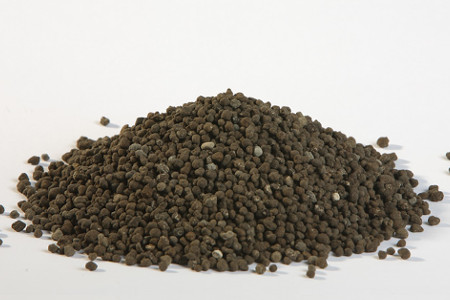TSP
 Triple superphosphate (TSP) was one of the first high analysis P fertilizers that became widely used in the 20th century. Technically, it is known as calcium dihydrogen phosphate and as monocalcium phosphate, [Ca(H2PO4)2. H2O]. It is an excellent P source, but its use has declined as other P fertilizers have become more popular.
Triple superphosphate (TSP) was one of the first high analysis P fertilizers that became widely used in the 20th century. Technically, it is known as calcium dihydrogen phosphate and as monocalcium phosphate, [Ca(H2PO4)2. H2O]. It is an excellent P source, but its use has declined as other P fertilizers have become more popular.
TSP has several agronomic advantages that made it such a popular P source for many years. It has the highest P content of dry fertilizers that do not contain N. Over 90% of the total P in TSP is water soluble, so it becomes rapidly available for plant uptake. As soil moisture dissolves the granule, the concentrated soil solution becomes acidic.
TSP also contains 15% calcium (Ca), providing an additional plant nutrient.
A major use of TSP is in situations where several solid fertilizers are blended together for broadcasting on the soil surface or for application in a concentrated band beneath the surface. It is also desirable for fertilization of leguminous crops, such as alfalfa or beans, where no additional N fertilization is needed to supplement biological N fixation.
CYPRUS
Psaron 16, Vera Court, Office 301
Egkomi, 2408, Nicosia, Cyprus
